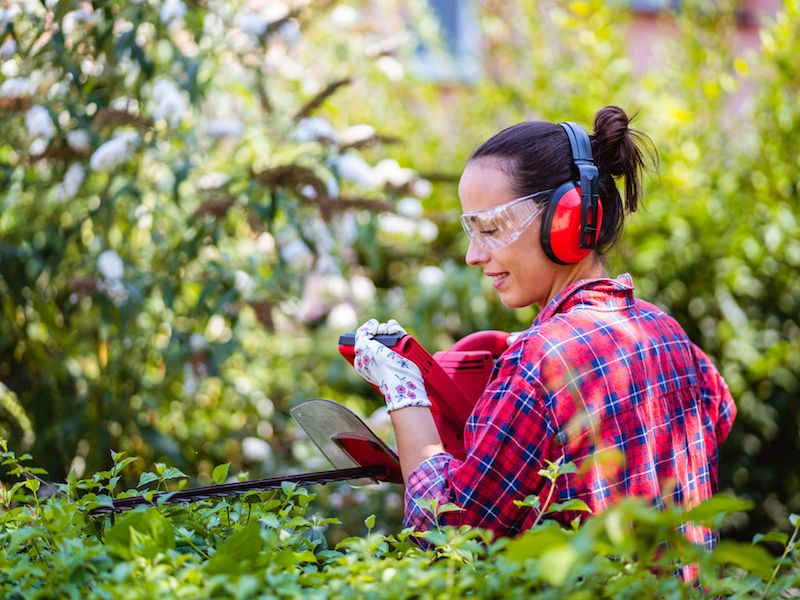
Safeguarding your hearing is a lot like eating the right way. It sounds smart, but not many of us have a very good concept of where to begin. If there aren’t any obvious noise risks and you don’t think your environment is especially noisy, this is especially true. But everyday life can stress your ears and your senses, so your auditory acuity can be preserved if you practice these tips.
The more you can do to slow down the impairment of your hearing, the longer you’ll be able to enjoy the sounds around you.
Tip 1: Hearing Protection You Can Wear
Using hearing protection is the most sensible and simple way to safeguard your ears. This means that reducing loud and damaging sound is a basic step you need to take.
This means that when it’s needed most people will want to wear ear protection. Hearing protection normally comes in two basic forms:
- Ear Muffs, which are placed over the ears.
- Ear Plugs, which are placed in the ear canal.
Neither form of hearing protection is inherently better than the other. There are benefits to each type. Your choice of hearing protection should, most notably, feel comfortable.
Tip 2: Be Aware When Sound Becomes Dangerous
But how can you be sure when to wear hearing protection? We’re used to connecting dangerous noise with painful noise. But the truth is that sounds can start to damage your ears at a much lower level than you might anticipate. The sounds of traffic, as an example, are loud enough to begin injuring your hearing after just a couple of hours. Recognizing when sound becomes harmful, then, is a vital step in protecting your hearing.
The following threshold is when sound becomes hazardous:
- 95-100 dB: This is the normal level of your earbuds or the level of farm equipment. After about 15-20 minutes this volume of noise becomes harmful.
- Over 100 dB: Your hearing can be very rapidly injured by this. Anything over this threshold can injure your hearing in minutes or seconds. For instance, rock concerts and jet engines will damage your ears in 30 seconds.
- 85 decibels (dB): After about two hours this level of sound is hazardous.Your hairdryer or a busy city street are both circumstances where you will find this level of sound.
Tip 3: Your Phone Can Become a Sound Meter
We can take precautions to limit our exposure, now that we have a concept of what levels will be harmful. But in real life, it can be difficult trying to determine what is too loud and what isn’t.
Your smartphone can now be used as a handy little tool. There are dozens of apps for iPhone, Android, and everything in between that turn your device’s microphone into a sound meter.
Having a dynamic sound meter with you will help you measure everything you’re hearing in decibels, so you’ll have a far better idea of what hazardous levels actually sound like in your day-to-day life.
Tip 4: Keep an Eye on Your Volume Settings
A smartphone with earbuds is normally the way people listen to music these days. Your hearing is put at risk with this setup. Over years of use, earbuds set to a substantially high level can cause considerable damage to your ears.
So keeping an eye on the volume control means protecting your hearing. In order to drown out sounds elsewhere, you should never raise the sound level. And we recommend using apps or configurations to ensure that your volume doesn’t accidentally become hazardously high.
If your hearing begins to wane, earbuds can become something of a negative feedback loop; you could find yourself constantly raising the volume of your earbuds in order to compensate for your faltering hearing, doing more harm to your ears in the process.
Tip 5: Have Your Hearing Examined
You may think of a hearing exam as something you schedule when your hearing has already begun to decline. The issue is that it’s not always easy to detect a problem in your ears without a baseline to compare results to.
Creating data that can be used for both diagnostic purposes and for treatment can be best accomplished by scheduling a hearing examination and screening. This will give you some extra perspective for future hearing decisions and ear protection.
Pay Attention to Your Hearing
It would be ideal if you could continuously protect your hearing without any hassles. But challenges are always going to be there. So protect your hearing when you can, as often as you can. Also, get routine hearing exams. Use these suggestions to improve your chances.
